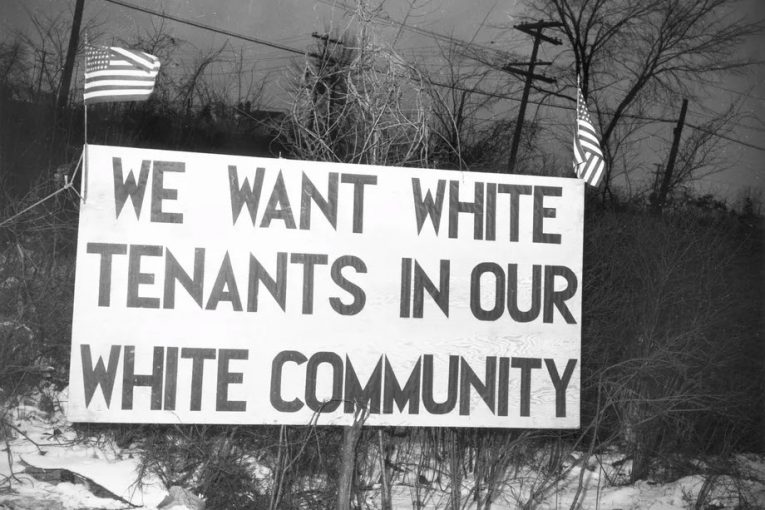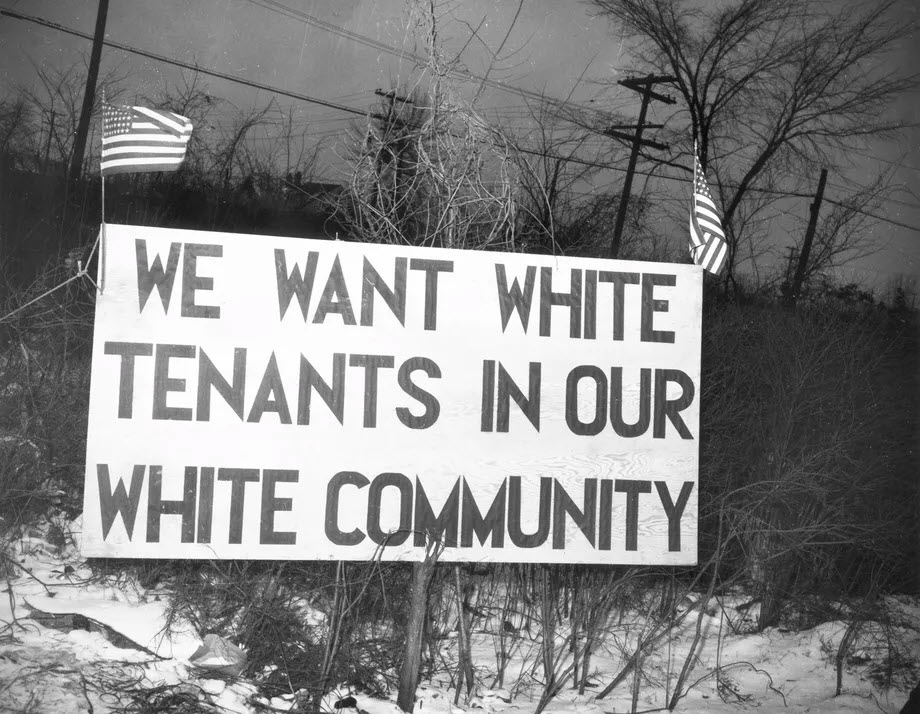

By David M. Greenwald
Executive Editor
My view on SB 9 continues to be that the bill probably isn’t likely to move the housing needle much. I often wonder if these kinds of bills are really worth it given the amount of animosity that they bring. One question I think we should be asking – should we have single family zoning of this sort?
I understand the argument that if you buy a home in a neighborhood, you don’t expect there to be changed circumstances. But I question whether that is a realistic expectation in our world. I also question whether having a duplex or split lot duplex built next to your home – assuming it adheres to mass and scale guidelines – is really a changed circumstance.
One reason I am leaning in the direction of support is the history of single family neighborhoods to exclude people of color but also the fact that they tend to generate housing that is unaffordable to huge swaths of people.
There was a pretty good article in CalMatters this week, which I thought laid out a few interesting  tidbits that should get thrown into this conversation.
tidbits that should get thrown into this conversation.
Report Manuela Tobias reports: “To lessen concerns from more than 100 cities and neighborhood groups that oppose the bill, Atkins on Monday added a few amendments that give local jurisdictions some veto power over units that threaten public health and safety and curtail potential speculation.”
She also cited, as I have, the study that found that the bill “would probably have a negligible impact on the California housing crisis, at least in the short-term. As for the nightmare scenario described by opponents? There simply isn’t enough evidence to back that up, either.”
The point we made yesterday you really don’t have enough space to split a lot and put duplexes on it in most neighborhoods. And the cost of redevelopment and construction will likely prohibit even retroactive duplexes.
So: “Development would be realistic in only about 410,000 parcels in California at most, or 5.4% of land now occupied by single-family houses, according to a new study by the Terner Center for Housing Innovation at UC Berkeley based on the version of the bill without the new amendments.”
And one of the new amendments requires owner occupation for at least three years before they can split their property and build as many as four units, probably reduces that number further and eliminates the possibility of big companies speculatively buying up properties. The Terner Center find that cuts the potential number of new units by another 40,000 or so.
Tobias reports: “The analysis was conducted using current land values and development costs, so the number of feasible units could change. But Garcia said that was unlikely in the near-term. The study found that the typical property owner could not afford to build a second unit, much less a third or fourth.”
Other barriers: “The new split lot couldn’t be less than 1,200 square feet, and historic districts, fire hazard zones and some rural areas would be barred from development.”
“You would not see the wholesale bulldozing of single-family homes, as we’ve seen characterized in many of the public comments in committee hearings,” Garcia said. “There’s just no financial basis for that fear.”
Bottom line: yeah we can imagine nightmare situations but they actually seem impractical.
So you can easily turn it around on me. Why bother with this and I think it comes down to the next point and again, I think Tobias did a great job here.
“Single-family zoning, which SB 9 seeks to eliminate, has deeply racist roots,” she reports.
Seriously if people wanted to understand the root of my newfound support for housing, it’s the need to undo our racist legacy.
Nice job here by Tobias with the history.
Originally introduced in Berkeley in 1916, “the designation was used to block a Black-owned dance hall from moving into a primarily white neighborhood. The zoning not only precluded the dance hall, but also multifamily units more commonly occupied by people of color.”
She notes that single-family zoning was then adopted by cities across the country.
“So to many California housing advocates, eliminating what they call “exclusionary zoning” is a symbolic and necessary act,” she writes.
“This is about getting rid of symbols of segregation and racism,” said Kendra Noel Lewis, executive director of Sacramento’s Housing Alliance, “which supports a similar local zoning change to allow duplexes, triplexes and fourplexes throughout the city.”
The critics of SB 9 push back on this of course. That was then, this is now.
Jennifer Holden, who we have published here in the Vanguard, pushed back.
“We don’t live in fear of those other people moving in because we already are those people,” she said, pointing to the neighborhood’s mostly Asian and Hispanic demographics. “What would change is our way of life.”
I have no doubt this is true. This is no longer the 60s or 70s, white suburban people or even city dwellers don’t live in fear – generally at least – of the Black family moving in and fear, “there goes the neighborhood.”
The big problem here is that while I agree that looking at redlining and discriminatory zoning is important to looking at established racial and economic patterns in neighborhoods, Shelley v. Kraemer came in 1948. Our neighborhoods are more segregated now than then.
The real problem is that not most people living in suburban neighborhoods care if their neighbor is Black, Brown or purple, but rather that economic factors sort these neighborhoods along economic lines which leads to them sorting along racial lines.
So until you allow for neighborhoods to have a mix of housing types, and have affordable housing as well as affordability by size and scale, we are going to have segregated neighborhoods.
Thus the problem we face is systemic racism and exclusion, not people protesting the Black family moving in down the street. The good news is the 60s and 70s are over in that respect, the bad news is, we are still segregated. And that’s why I would likely lean toward favoring SB 9 – the chance to start cutting into that.







I grew up in a neighborhood that was becoming more dense through the development of high-rise apartments along the major traffic arteries and the replacement of classic bungalows with apartment buildings. As a kid it was alienating and one of the reasons I left Los Angeles. It is why, to this day, I prefer peripheral development to infill.
The link between peripheral and segregation is pretty well documented:
Source
I’m really not sure where you’re going with this. Peripheral development is segregated. Infill is too expensive, so it’s segregated. Lot splitting via SB9 is not going to be very effective, and is likely to be expensive, so I don’t see how it increases diversity. There’s no money for affordable housing.
If a more diverse demographic for Davis is one of your goals for housing policy, how do you suggest it be encouraged?
I don’t see how to fix it without reestablishing RDA. I really don’t understand why the legislature has avoided this solution.
You don’t understand why? Because the money that was going to RDA’s was being taken from other government agencies (counties, special districts) and being backfilled by the state. So local governments and school districts are going to oppose anything based on that approach, since the state is not likely to backfill 100%. Any alternative simply means local taxpayers are funding affordable housing projects, and I don’t see how that yields enough revenue for any significant amount of housing. If you try to mandate that developers provide it, you decrease the likelihood of the projects actually happening.
There have been several bills introduced since 2012 and as far as I can tell they’ve never made it out of committees.
“You don’t understand why?”
I probably could have said it more artfully. But my point was, if they want to solve the problem…
The logic behind SB 9 is that duplexes are less expensive to buy or rent than single-family homes. So, two (or four) duplex units on one (or two) lots that would otherwise have one (or two) single-family home(s) provides 2-4 relatively affordable homes, which would facilitate increased diversity.
SB 9 may not have a major impact on the overall affordable housing crisis or diversity. But it’s one additional means of addressing the issues.
So some individuals who find denser living problematic will move to less dense areas. However, they can’t be allowed to create barriers to building housing that is affordable by forcing single family zoning. That’s what leads to segregation so long as we have the 10 to 1 wealth disparity between white and Black households.
As for Don’s comment, David has acknowledged that SB 9 won’t solve the problem or even make a huge dent. But it will take down one more barrier to solving the problem. This is going to require a multistep process. My economic analysis in 2006 led to the agreement to decommission the Klamath hydro dams. Taking down those dams is not sufficient to restore the fisheries on the Klamath, but it is a necessary step among many. SB 9 is also necessary but not sufficient.
I think one of the solutions will have to be some form of reverting property tax revenues from new housing back to local jurisdictions. (RDAs were being abused which was why they were abrogated.) This has to become a fiscal winner for local governments–it already is for government overall so we need to reallocate those revenues. The property/sales/income/excise tax splits have been modified several times over the years so this is very possible. (The Triple Flip is one notable example.) Maybe this is something to bring up with our state legislators.